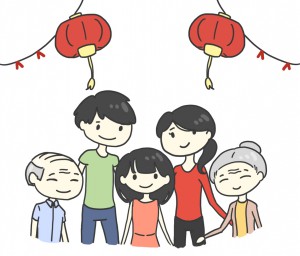Written and Illustrated by Phoebe Uy and Erielle Sim
Edited by Jo Prieto Ng and Leanne Sy
Do not underestimate the power of imagination, of a simple story, of a children’s fairy tale. Instead, let’s celebrate children’s curiosity, desire to learn, and ability to see the world for how it is. Let’s encourage children to develop their abilities and their sense of agency.
For World Literacy Day, we celebrate and highlight the power of a good story and a learned individual. Although not all children have access to proper education, it is through reading that one can learn new lessons and develop their character.
Like other folk and fairy tales, Chinese children’s stories are gold mines for sage teachings. They also promote values such as loyalty, filial piety, respect for the elderly, and protection of one’s dignity. In this article, we will be introducing some Chinese stories that have the priceless treasure of sage wisdom.
The Lazy Woman
What is your laziest story?
Whether it be leaving homework unfinished or forgetting to make their bed in the morning, children often receive a good scolding for laziness. Parents around the world, especially Chinese parents, bemoan this behavior. After all, it’s their biggest hope that their children grow up responsible and avoid the consequences of laziness.
Most likely an oral fairytale, The Lazy Woman is a story Chinese parents may still remember and use as a lesson for their children. It follows the despicable behavior of a wife who lived a life of both laziness and negligence. She hated doing any sort of housework, and all she liked doing was to sleep and eat. The story contains several accounts of her poor behavior, but it is the ending that teaches readers a valuable lesson.
One day, the lazy woman decides to visit her mother, who lives far away. The lazy woman’s husband bakes her a giant biscuit and ties it to her neck so that she wouldn’t starve on the journey. Days after the lazy woman has gone, her husband receives the news that she has passed away. He goes to her body and finds the biscuit––still giant, still hanging from her neck, with only the part nearest to her mouth eaten.
So, all you kids out there, remember that laziness can only take you so far. We’re responsible for many things, but ourselves most especially. Be negligent and catastrophic results won’t be too far behind.
The Seven Chinese Brothers
People often say that there is strength in numbers and, in this story, that number is the power of seven.
Set in a slightly more fictional version of imperial China, when the Great Wall was still but an In-Progress Wall, this tale centers around the loyalty of seven brothers amidst the persecution of an emperor. Each brother possesses a great power of their own. But, it is through working together that they make up for each other’s shortcomings.
With their superhuman senses of hearing and sight, the first two brothers discover the injustices suffered by the peasant workers at the Great Wall. The third brother, with his super strength, goes to help out. The emperor learns of Brother Three and imprisons him. The other brothers take advantage of their identical looks and each other’s place in enduring the emperor’s punishments. In the end, the youngest brother uses his tears to dismantle the last of the emperor’s plans.
It goes without saying that the moral of the story is that everyone has their own strengths and weaknesses. It is in knowing our strengths that we can help and support each other. Also, it is in knowing our weaknesses (and acknowledging them) that we can humbly allow others to be there for us as well.
Bian Heh’s Jade
Have you ever been quick to judge an item based on its appearance? Perhaps it is only plain on the outside.
The legend of Bian Heh’s jade is a Chinese folktale about a jade hunter named, of course, Bian Heh.
One day, he discovers a rough stone containing a hidden treasure of jade. He presents the unpolished stone to Emperor Chuli as a symbol of reverence. However, the court’s jade experts dismiss the stone as a mere rock, enraging the emperor who orders that Bian Heh’s foot be amputated. In an attempt to clear his name, Bian Heh offers the jade once again to the next enthroned emperor, Emperor Chuwu, but he suffers the same fate, becoming a cripple. Bian Heh, humiliated and heartbroken, sobs loudly outside the city. His cries are heard by the new Emperor Chuwen, who summons Bian Heh and his jade before him. The jade is ordered to be cut, and everyone is taken aback by its translucent appearance, revealing a one-of-a-kind jade. In honor of the jade hunter, the king named the special piece of jade “Bian’s Jade.”
The term “Bian’s jade” is still used today to describe items that are regarded as extremely valuable. This story serves as an important reminder that we shouldn’t be too quick to pass judgment, as we may miss a rare treasure hidden in plain sight.
Fish for the Moon in the Well
The next story reveals that, sometimes, common sense may not be that common after all.
Once upon a time, a clever man named Huojin decides to get some water from a nearby well. Upon peering into the well, he receives the shock of his life, coming face-to-face with the moon which had unfortunately fallen into the well. He retrieves a hook from his house, ties it to the rope of his bucket, and throws it into the well to fish for the moon. After a while, his hook catches what he believes to be the moon. Huojin yanks the rope as hard as he can until it snaps. He flies backwards and lands on his back. With his gaze fixed on the sky, he feels relief upon seeing the moon high in the sky. He is filled with pride for putting the moon back in place.
Thanks to Huojin, we now have the moon back where it belongs! But did he really retrieve the moon? You tell me.
These are just a few of the many, many Chinese children’s stories out there. The next World Literacy Day will be on September 8, 2023, and hopefully these tales have interested you to read new stories, share them, or even write some of your own. And, most importantly, live out the morals of these stories.




